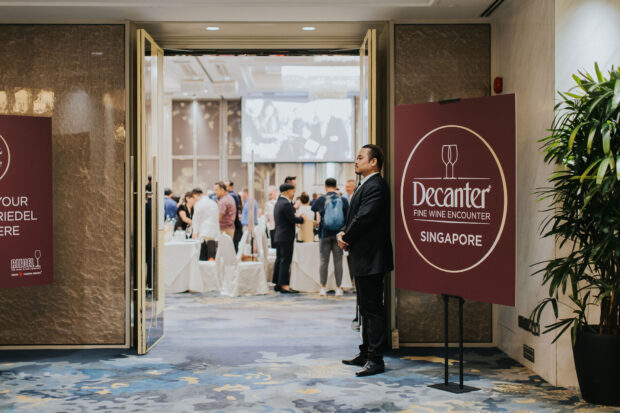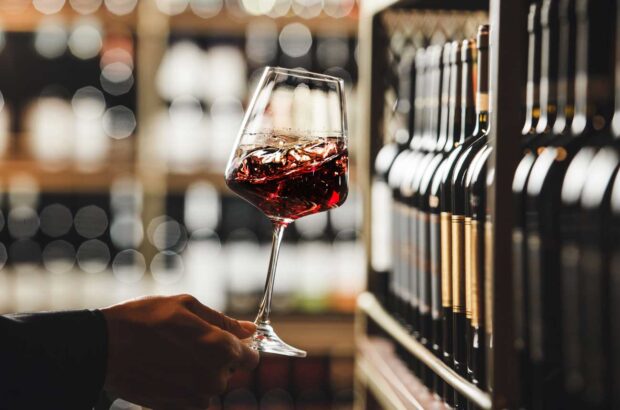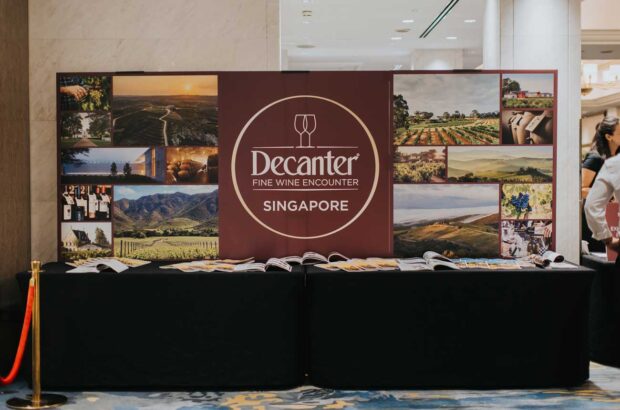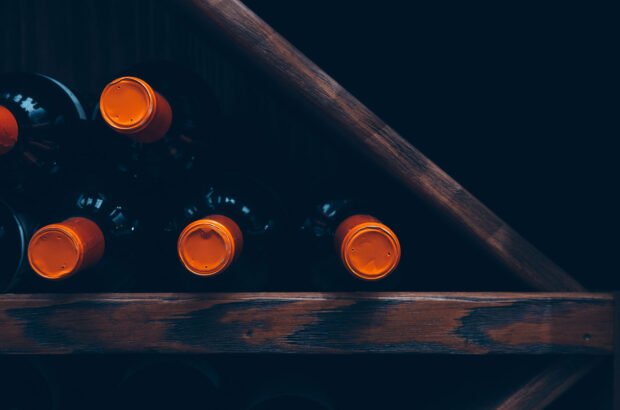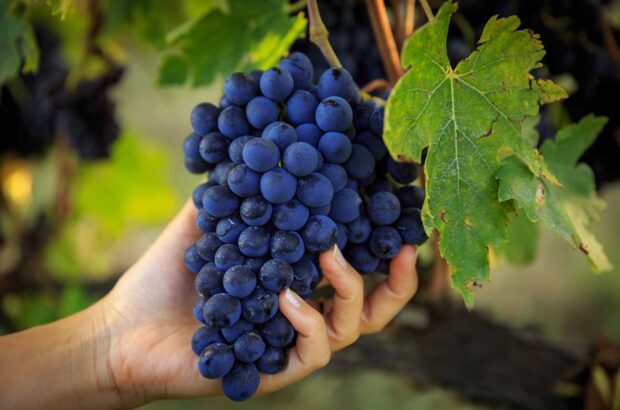Lying largely in Croatia, the Istrian peninsula sees cool breezes from the Alps meet Mediterranean sunshine, while its shores are washed by the azure waters of the Adriatic. Walled coastal towns, Roman ruins and medieval villages dot the landscape – as well as, of course, winemakers’ prized vineyards. Wine has been made here for centuries, and native varieties are a matter of pride.
Istria’s key grapes
Malvazija Istarska
Istria’s versatile flagship white: fresh, vibrant styles, wood-aged expressions and orange wines.
Muškat Momjanski
An aromatic white grape from the town of Momjan.
Muškat Ruža
A pink-skinned variety with raspberry, grapey character.
Teran
Robust and tannic reds with bilberry and raspberry notes.
–
Indigenous grapes such as the wonderfully versatile Malvazija Istarska and the increasingly impressive, robust red Teran grow alongside Muscats of all colours and a smattering of international grapes (predominantly Merlot, Cabernet Sauvignon, Sauvignon Blanc and Chardonnay). Wineries here are typically family-owned, many tracing their history back over a century, and visitors can always be sure of a warm welcome.

The tasting room at Deklić.
Deklić
The Deklić family is rightly proud of their dramatic new winery near the town of Vižinada. It has already helped the family take their wines to the next level: Deklić won Best Aged Malvazija Istarska at the 2024 Vinistra wine event. In 1920, Marko Deklić founded the estate with just one hectare; today the winery is run by his great-grandson David Deklić, supported by his siblings Dino and Lucija, while their grandfather Konstantin oversees the vineyards.
Red soils are unusual in this location, but give richness and structure to the wines. Naturally, Malvazija Istarska is the key grape here, but Teran, Merlot and Cabernet are also impressive.

Kabola’s organically farmed vineyards.
Kabola
As you head through its vineyards and up Kabola’s cypress-lined drive, you could be forgiven for thinking you were in Tuscany – and in fact, this area has stood in for Italy in fi lms. Located near Buje, the old stone-built building has recently been renovated with new winery facilities. Founded in 2004, Kabola was one of the first modern wineries in the region, and its owner, Marino Markežić, has continued to be a pioneer. An early adopter of organic viticulture, Markežić was the first in the area to make wine in amphorae. Local grapes are Kabola’s focus, produced in a range of styles from elegant sparklings to profound and complex amphora wines.

The Kozlović winery in northwest Istria.
Kozlović
The glorious green valley of Valle (near Buje), where the Kozlović family has lived for over a century, is today home to their stunning modern winery. Gianfranco and Antonella (now joined by their daughter Gianna, the family’s fifth generation) were the first to produce the contemporary, fresh style of Malvazija Istarska that set the standard in the region. The winery also led the way with oak-fermented and single-vineyard expressions of Malvazija Istarska before turning to the local red variety Teran. Kozlović produces both a youthful style, full of crunchy, juicy raspberry and pepper, and a profound, age-worthy single-vineyard version.

Matošević’s Grimalda vineyard.
Matošević
Ivica Matošević is a key figure in modern Istrian winemaking, having left a career in science to become a full-time winemaker 25 years ago. The Matošević winery lies close to the dramatic Lim Channel, a top tourist destination, and has vineyards in two locations. One, on a chalky hilltop close to Buje, gives fragrant, elegant Malvazija Istarska, produced in several styles: from fresh and crisp to a honeyed, spicy version aged in acacia. The second site is the steep Grimalda vineyard near the town of Pazin. Here in the cool, hilly heart of Istria, Matošević produces blends that interweave the best of local and international grapes.

The barrel room at Rossi winery.
Rossi
The Rossi family have Italian roots, settling in in Vižinada in 1885, but today they are Istrian through and through. Brothers Luka, Marko and Filip run the business, craft the wine and manage the hospitality side respectively. The winery, built of honey-coloured local stone, offers fabulous views across the landscape – which can also be seen from the air, as the winery offers flights with Helifly Istria. Marko makes an elegant, fresh Malvazija Istarska as well as an inviting rosé and a serious Bordeaux blend. Templara, meanwhile, is a creamy, complex expression of Malvazija Istarska from Rossi’s finest plots, on chalk-rich white soils.

The modern Tomaz winery.
Tomaz
The stunning Tomaz winery sits in the heart of Istria, overlooking the Mirna river from a small hill near the fairy-tale medieval town of Motovun. The winery’s owner, Klaudio Tomaz, has always been unconventional: switching from working as a butcher to becoming a passionate, self-taught winemaker, he produced his first commercial vintage in 2009. He sees his wines as carrying the soul of Motovun, a location known for great expressions of Teran – his top red is the intense, layered Barbarossa Teran. Malvazija Istarska also has a special place here: unusually, Tomaz’s skin-contact Sesto Senso spends time in mulberry and acacia.

Map credit: JP Map Graphics Ltd
Visiting Istria: Where to stay
Istria offers a superb choice of accommodation for wine lovers, ranging from boutique hotels attached to wineries to modern seafront resorts and restored stone villas hidden among vineyards – here are five of our favourites:
Meneghetti Wine Hotel & Winery
The Meneghetti estate is a peaceful world of its own. Centring on a stone villa and fine dining restaurant, it now offers luxurious accommodation as a member of the prestigious Relais & Châteaux group as well as aerial tours via Helifly Istria. The modern winery (with an annual production capacity of 150,000 bottles) hosts tastings, where you can explore the breadth of Meneghetti’s portfolio, from traditional-method sparkling to robust reds, as well as olive oil.

Grand Hotel Brioni Pula.
Grand Hotel Brioni Pula
On the Verudela peninsula, the luxurious Grand Hotel Brioni Pula, a Radisson Collection Hotel, is ideally situated for those wanting to explore the wineries of southern Istria. The waterside hotel dates from the 1970s, when it hosted actors and musicians including Abba and Boney M after they performed at Pula’s amphitheatre. Completely renovated in 2022, it boasts elegant décor, a spa and a 60-metre sea-view infinity pool – and guests can even take a boat trip to the nearby Brijuni National Park.

Stancija Baracija & Clai Winery.
Stancija Baracija & Clai Winery
Situated in Krasica near Buje, Clai Winery is highly regarded for its natural wines. The winery’s 10 hectares of vineyards are cooled by sea breezes from the Adriatic, which is only six miles to the west. Among its five hectares of olive groves, meanwhile, stands Stancija Baracija, a renovated 19th-century villa with rustic-chic decor, eight double rooms, a sauna and outdoor pool. The same owners run the nearby Stara Škola restaurant, serving exquisite local, seasonal fare.

Roxanich Winery & Design Hotel.
Roxanich Winery & Design Hotel
Below the medieval walls of the hilltop town of Motovun, overlooking the vineyards and oak forests of the Mirna Valley (famed for tru es), Roxanich opened in 2019. Its winery takes up the lower floors, with a terrace restaurant upstairs, and an infinity pool in the garden. Roxanich prides itself on its organic and minimal intervention winemaking. The area is noted for its expressions of flagship red variety Teran, and Roxanich and numerous other local wineries offer tastings.

Grand Park Hotel Rovinj.
Grand Park Hotel Rovinj
In Rovinj, on Istria’s west coast, this waterside hotel makes for an opulent base from which to explore Istrian wine. The hotel boasts a rooftop spa and pools with dazzling views of the Venetian-era old town. Its rooms are sumptuous yet contemporary and feature specially commissioned artwork. Fine dining options include Agli Amici (with two Michelin stars) and Cap Aureo, which offers a tasting menu for a 20-plate journey through Istrian food and wine.
Discover more about Istria
Connect on
Facebook | Instagram | X | YouTube




